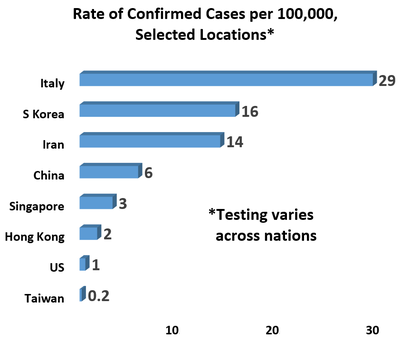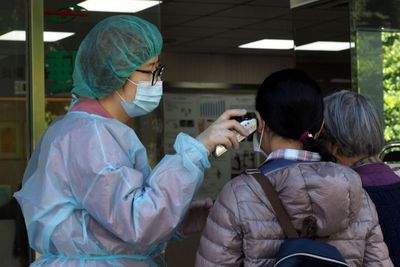Countries That Contained COVID-19: New York Times
Countries That Contained COVID-19: New York Times
Read the article from the New York Times about strategies used to contain COVID-19 in Singapore, Hong Kong and Taiwan.
Benjamin J. Cowling is a professor of infectious disease epidemiology at the University of Hong Kong. Wey Wen Lim is a graduate student in infectious disease epidemiology at the University of Hong Kong.

So many unknowns: Epidemiologists would caution that it is far too early to compare countries on COVID-19 rates – and many factors must be considered: countries vary on the types and availability of diagnostic tests, median age, diet, preferences on personal space and other customs – still, Taiwan’s rate is notably low (Source: New York Times and ncov2019.live site)

(Source: EPA/EFE)
Taiwan’s Strategy on COVID-19
- Set up a centralized command center to encourage rapid communications
- Taiwan did not immediately ban travel from China
- Taiwan integrated its national health insurance and immigration/customs databases to allow big data analytics, rapid case identification with real-time alerts
- Quick Response code scanning and online reporting of travel history and health symptoms to classify risks based on travel history and flight origin
- Establishment of a national toll-free hotline and then city hotlines to report symptoms of selves or others
- In early January, with reports of new virus, health officers boarded incoming flights from Wuhan to screen travelers
- Conducted comprehensive screening of travelers from suspect areas
- With first imported case, suspended flights from Wuhan on January 21
- By second week of February, banned flights from China except those from Beijing, Shanghai, Xiamen, and Chengdu
- Relied on home quarantines, with some government quarantine facilities available
- Enforced penalties against those breaking isolation orders, including fines of about $30,000
- Organizers of mass gatherings, including religious services were encouraged to suspend services
- Closed schools for two weeks after the Lunar New Year holiday
- Controlled distribution of surgical masks with fixed prices
- Health officials advising washing hands thoroughly, avoiding crowds and wearing masks when showing symptoms
- Taiwan may be testing less than other locales
- The median age in Taiwan is 42.5 years
- Hospital bed density is 69.8 per 1000 people; Taiwan has fewer nurses and doctors per 1000 people than much of the developed world
- Diverse political parties developed programs together
(Source: Stanford University Freeman Spogli Institute for International Studies, World Bank, Statista, New York Times)